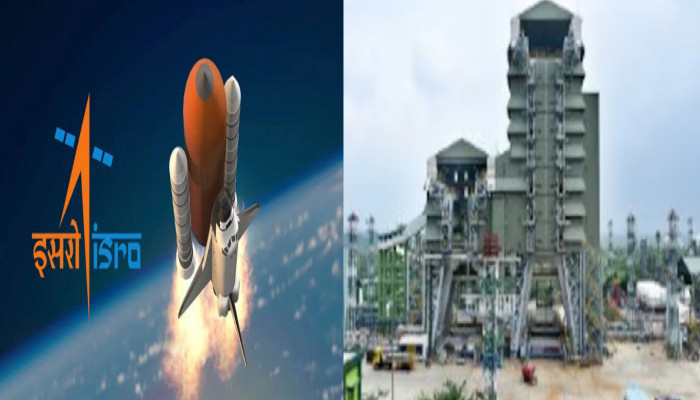ISRO successfully tests engine for India's most powerful launch vehicle
- In Reports
- 12:04 PM, Mar 29, 2025
- Myind Staff
India's space program took a big leap forward as the Indian Space Research Organisation (ISRO) successfully completed the first major hot test of the Lox Kerosene 200T thrust semi-cryogenic engine.
This important test was conducted at the ISRO Propulsion Complex (IPRC) in Mahendragiri, Tamil Nadu. It marks a significant step in developing a stronger and more efficient engine for future space missions. ISRO's semi-cryogenic engine, which runs on Liquid Oxygen (LOX) and Kerosene, produces a powerful thrust of 2000 kN. It is designed to boost the payload capacity of India’s LVM3 rocket, making the country’s space launch vehicles stronger. The successful test of the engine’s Power Head Test Article (PHTA) marks a significant step forward in space propulsion technology, showcasing ISRO’s dedication to innovation in rocket development.
After the test, Union Minister Dr. Jitendra Singh praised the achievement, saying that ISRO had taken another big step in advancing its space mission capabilities. The test took place at a newly built facility, which was inaugurated by Prime Minister Narendra Modi during his visit to Thiruvananthapuram. The Liquid Propulsion Systems Centre (LPSC) is developing a new semi-cryogenic engine and stage. The upcoming SC120 stage, powered by the SE2000 semi-cryogenic engine, will take the place of the current L110 core liquid stage in the LVM3 rocket. This upgrade is expected to boost the rocket's payload capacity in geostationary transfer orbit (GTO) from four tonnes to five tonnes. The semi-cryogenic propulsion system uses safer, non-toxic propellants and provides better performance than the current liquid propulsion stages.
The SE2000 engine consists of several key parts, including the thrust chamber, pre-burner, turbo pump system, control components, and startup system. It uses an oxidiser-rich staged combustion cycle, a highly efficient but complex design. This allows the engine to achieve a high chamber pressure of 180 bar and a specific impulse of 335 seconds. Due to its advanced technology, semi-cryogenic engines of this size are available in only a few countries worldwide. To support this advancement, ISRO set up the Semicryogenic Integrated Engine Test Facility (SIET) at IPRC, Mahendragiri. This modern facility, inaugurated in February 2024, is designed to test semi-cryogenic engines with thrust levels of up to 2600 kN. It features an advanced control system and highly accurate data collection capabilities, making it essential for verifying engine performance.
Before fully integrating the SE2000 engine, ISRO carried out several performance tests on intermediate versions, including the PHTA. The recent hot test was conducted to validate key components, including the pre-burner, turbo pumps, start system, and control mechanisms. To ensure a smooth and controlled ignition process, multiple trials were carried out using a separate test setup called the Pre-Burner Ignition Test Article (PITA). This helped refine the ignition sequence before final testing. The test was successful and lasted for 2.5 seconds, showing that the engine ignited and operated smoothly. All important parameters worked as expected, making it a big milestone in the development of the semi-cryogenic engine. Moving ahead, ISRO will carry out more tests on the PHTA before fully integrating the SE2000 engine.







Comments